
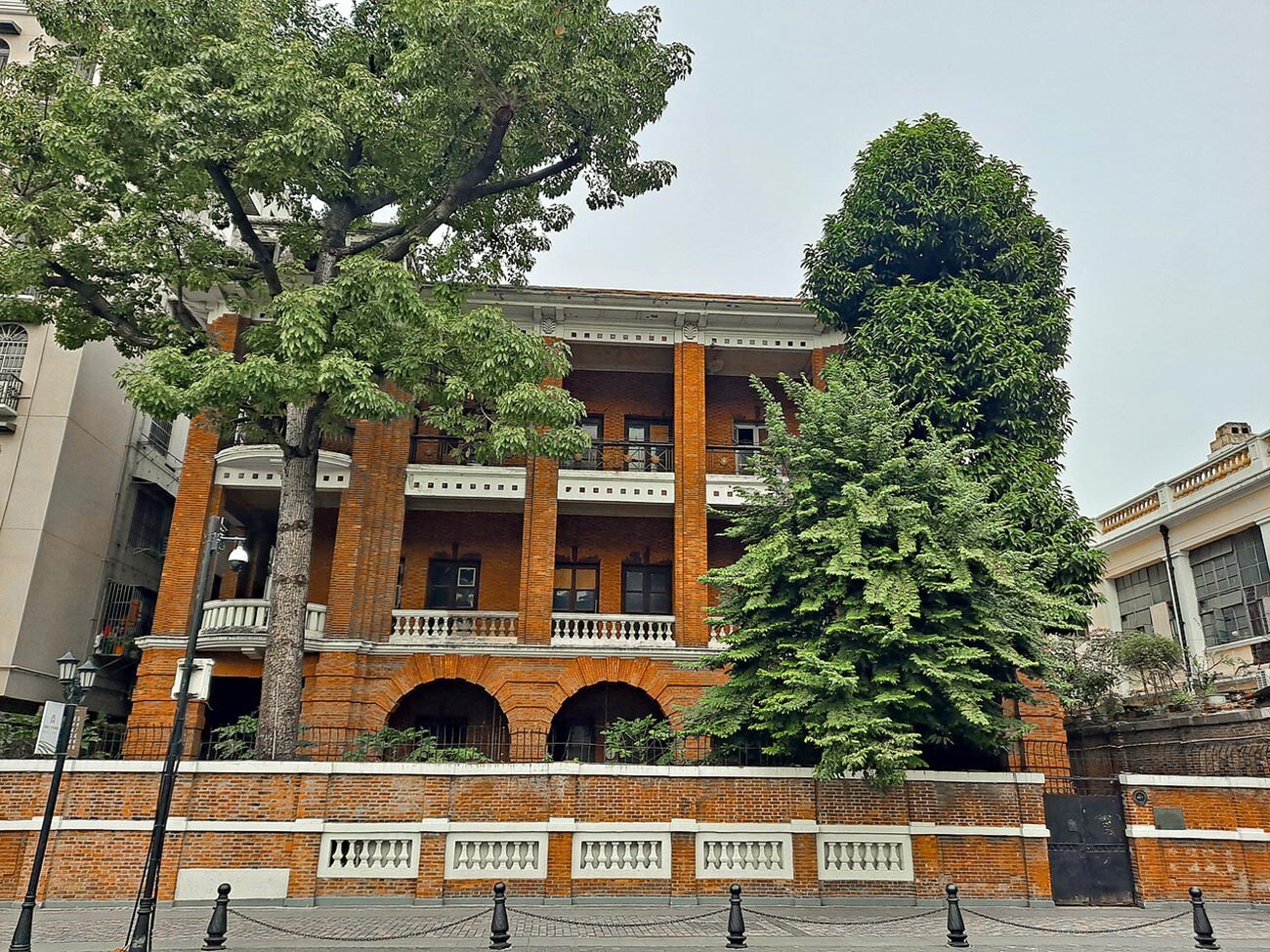
The building of the Consulate General of the USSR (Russian Empire) in Guangzhou (Canton)
钉钉 (CC BY-SA 4.0)While the Soviet Union was still a young country, in China, the struggle between the Kuomintang (the conservative party) government and the Chinese communists was raging. Chiang Kai-shek, the first president of the Kuomintang, ruthlessly cracked down on the Communists throughout the country. In December 1927, in the city of Canton (now Guangzhou), the Military Revolutionary Committee, a communist organization, was established and, on December 11, it staged a revolt against the Kuomintang in the city.
The uprising was inspired and supported by Moscow, which was interested in establishing communist power in China. However, the rebels, having first seized almost the entire city, failed to hold it: the workers and sailors, who the Communists counted on, did not join the uprising.
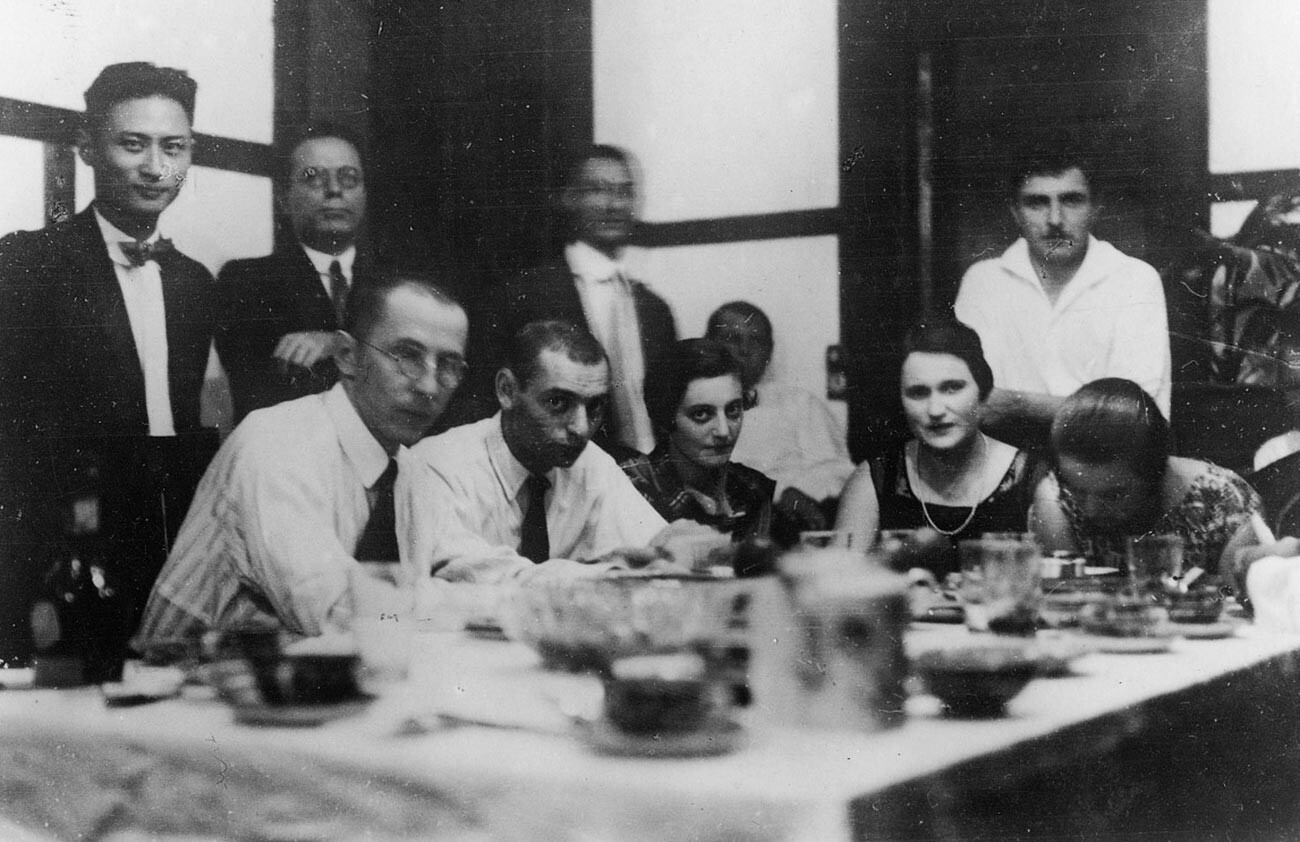
Employees of the USSR Consulate General in Canton, including those killed by Chiang Kai-shek soldiers
Consulate General of the Russian Federation in GuangzhouOn December 13, as the government troops were suppressing the revolt, they also seized the Soviet consulate. The staff managed to linger over a little to be able to burn secret papers, after which the then Consul General Boris Pokhvalinsky himself opened the gates to the soldiers. The embassy was looted and its Chinese and Soviet employees were arrested and led through the city streets in disgrace.
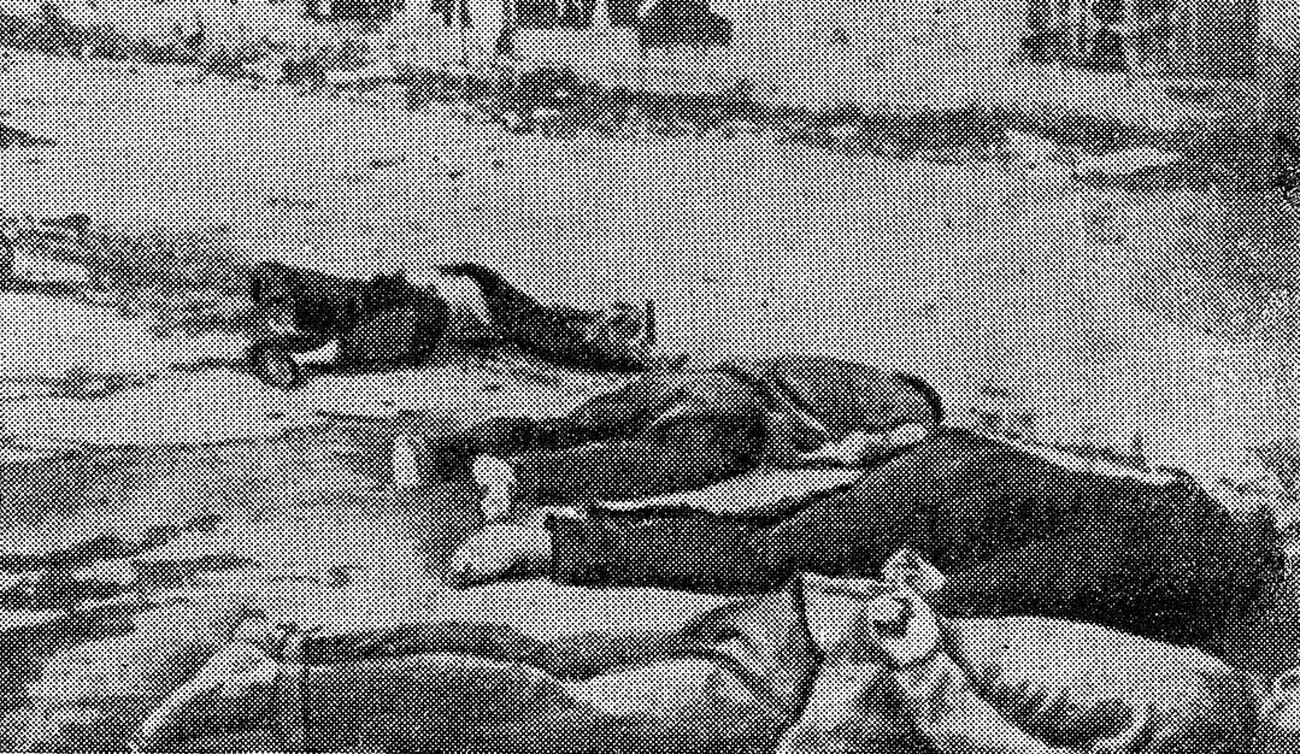
The executed civil officers of the USSR Consulate General in Canton, 1927.
Archive photoThe following day, five of the consular staff (Vice-Consul Abraham Hassis, Secretary Vladimir Ukolov, clerk Konstantin Ivanov, cipher officer Fyodor Popov and translator Pavel Makarov), as well as seven Chinese employees of the Consulate General were shot. Consul General Pokhvalinsky was arrested and subsequently expelled from the country. After the suppression of the uprising, Chiang Kai-shek ordered the closure of all the Soviet consulates in China. Despite the fact that the bilateral diplomatic relations were not severed, for the next 10 years, there was a bitter conflict between the Soviet Union and China, which on a few occasions nearly grew into a war. The situation started to improve only by the end of the 1930s.
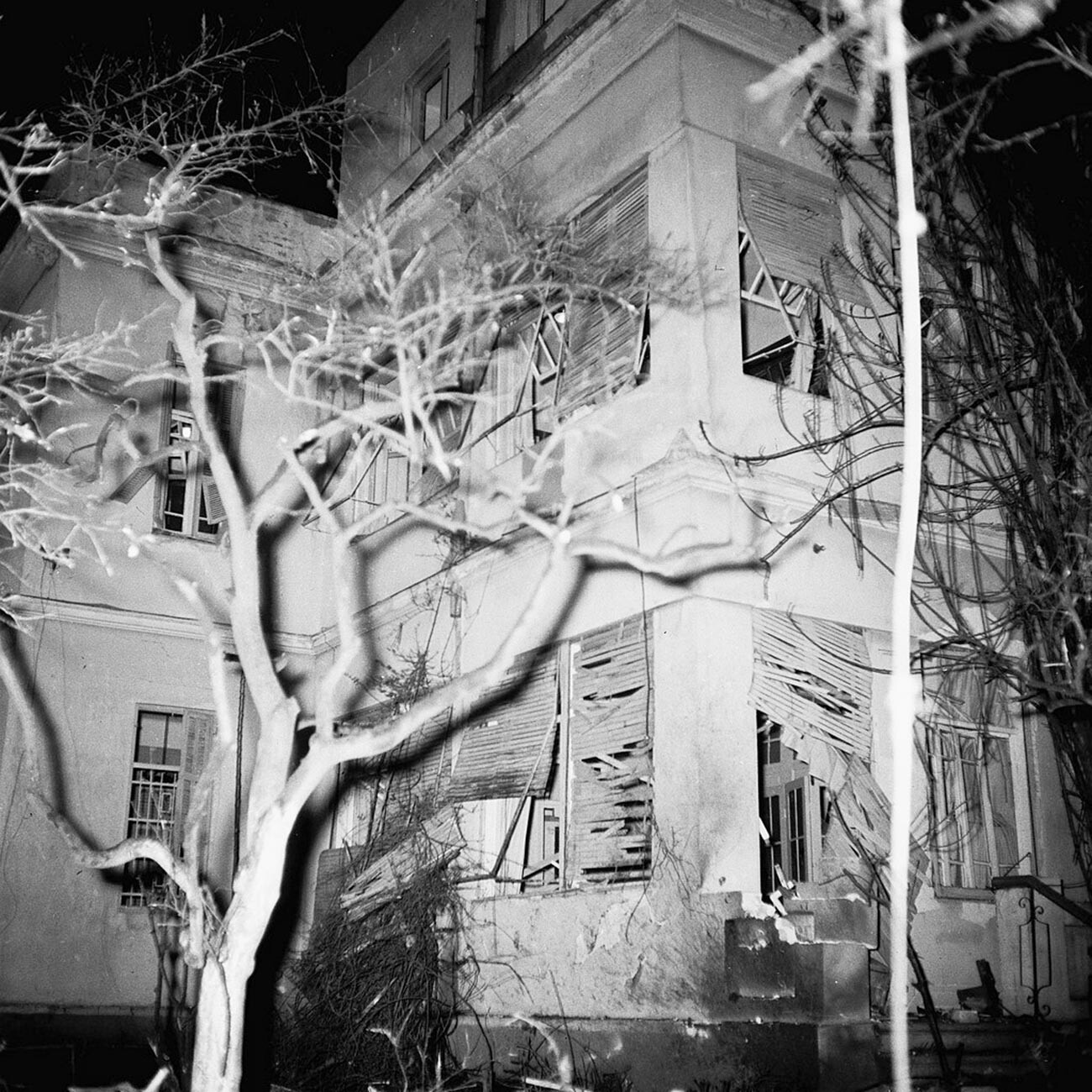
Soviet Russian embassy building after explosion of a bomb placed by a fanatic in the courtyard of the embassy, Tel Aviv, 1953
Hans PinnIn the last years of Stalin’s life, multiple searches, interrogations and arrests were carried out in Moscow and Leningrad in connection with the so-called “Doctors’ plot” affair, fabricated by the USSR State Security bodies. The doctors were accused of creating a Jewish nationalist organization with the purpose of killing the top Soviet leaders. The “killer doctors” were vilified in the Soviet press, which led to the launch of a mass anti-Semitic campaign in the USSR. Besides, in 1952, in the case of the ‘Jewish anti-Fascist committee’, 13 people were shot and hundreds of Soviet Jews were repressed.
READ MORE: Why the USSR was no Promised Land for Jews
On February 9, 1953, an explosion of an unidentified device occurred in the Soviet Embassy in Tel Aviv. Ambassador Pavel Ershov’s wife Klavdia had her face cut by shrapnel, the janitor’s wife had her legs injured and the embassy driver’s lower jaw was crushed. According to Israeli embassy guards, the staff called an ambulance only 50 minutes after the explosion – all the while coordinating their actions with Moscow.
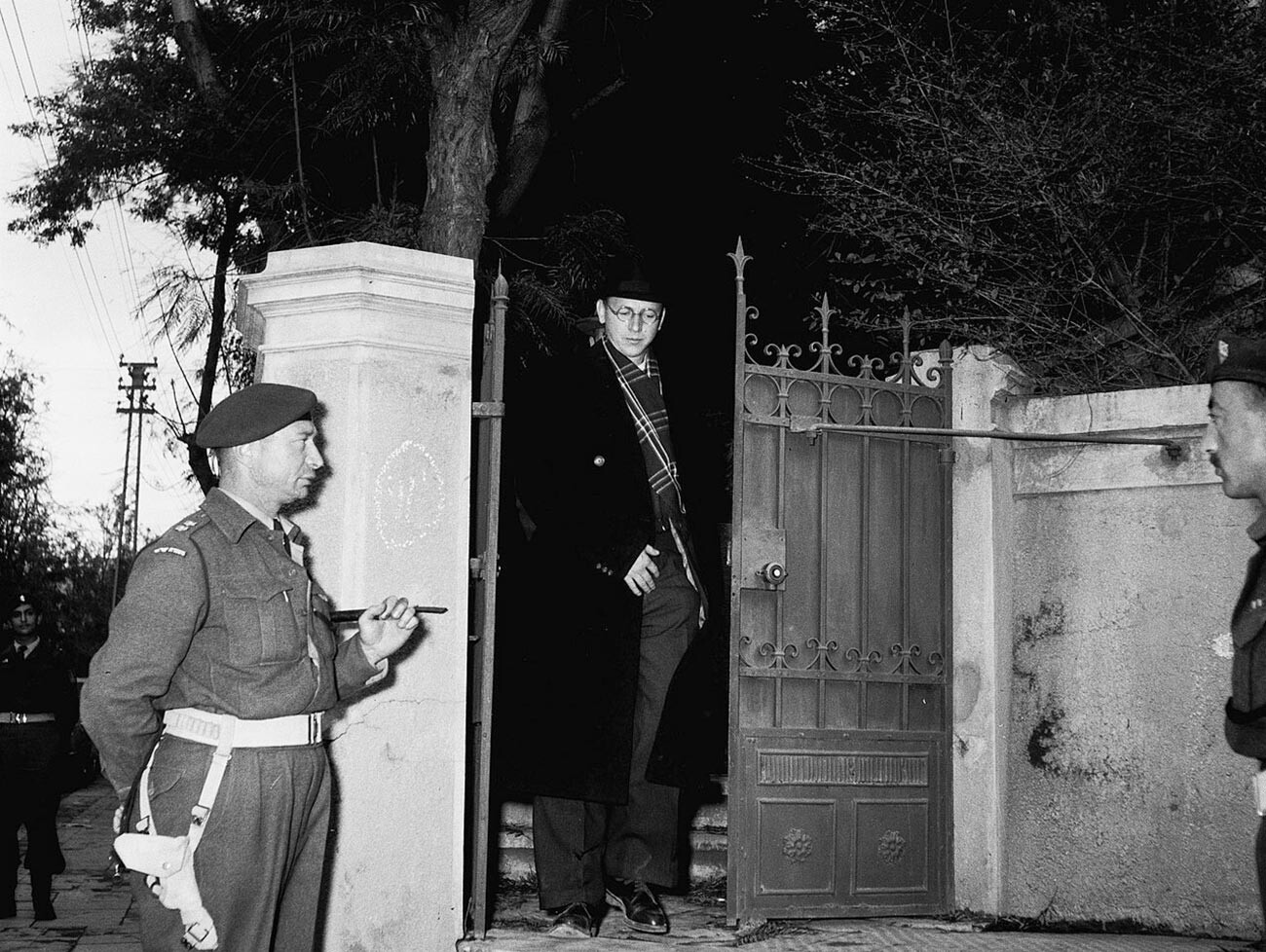
The Russian ambassador Pavel Yershov leaving the embassy building on Rothchild blvd. in Tel Aviv
Hans PinnAlthough, the very next day, Israeli Prime Minister Ben-Gurion officially condemned the terrorists and apologized to the USSR, by February 12, a note was read out to the Israeli Ambassador to the USSR informing him that the USSR was severing diplomatic ties with Israel and recalling its diplomats.
The incident was completely disadvantageous to Israel, since the Soviet Union was the first country to recognize Israel as a sovereign state back in 1948. The authorities did their best, but they could not find the perpetrators. As researcher Ami Pedahzur later discovered, it was the Zionist terrorist organization ‘Kingdom of Israel’ (‘Tzifrin underground’) that had carried out the attack. In May 1953, members of ‘Kingdom of Israel’ tried to arrange an explosion in Jerusalem, but were detained. Their involvement in the embassy bombing was discovered much later.
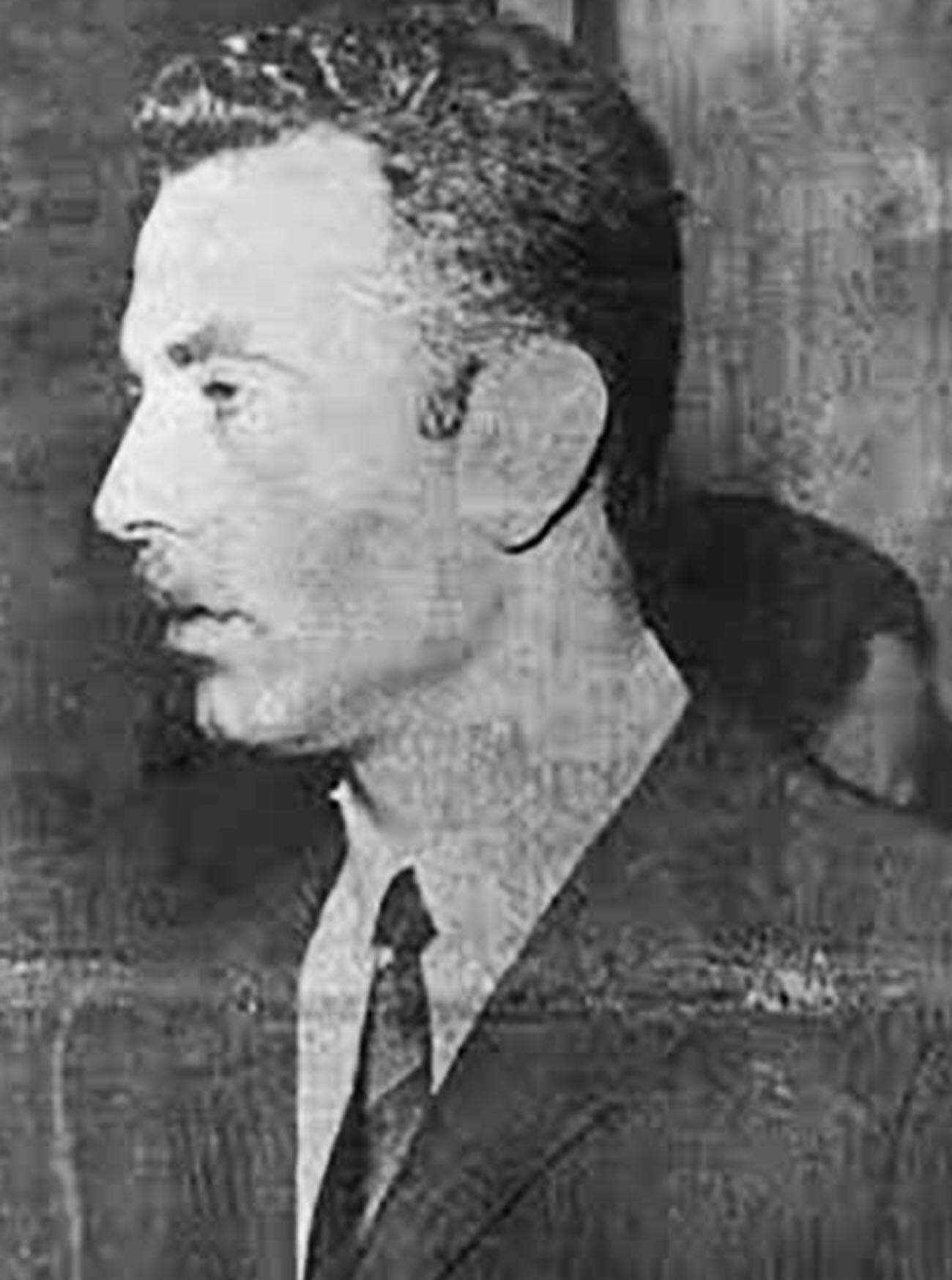
Oleg Lyalin
Archive photoIn 1995, Oleg Kalugin, a KGB major general and author of the explosive book ‘The First Main Directorate. My 32 years in intelligence and espionage against the West’, left Russia for the U.S. Convicted in 2002 in absentia for treason and disclosure of classified information, Kalugin was stripped of his major general rank and sentenced to 15 years behind bars, but he never returned from the United States.
In his book, Kalugin revealed, among other things, the details of a terrible diplomatic and undercover Soviet intelligence failure that occurred in 1971. At the time, Oleg Lyalin, an employee of the 1st Directorate of KGB, working undercover in London, got really drunk somewhere in London. Lyalin’s “legend” in England was that he worked as an employee of the Soviet trade mission. Early in the morning, while it was still dark, Lyalin was driving around central London in a car with his headlights off and when a police officer stopped him, he flew off the handle, yelling that he was an employee of the USSR’s KGB.
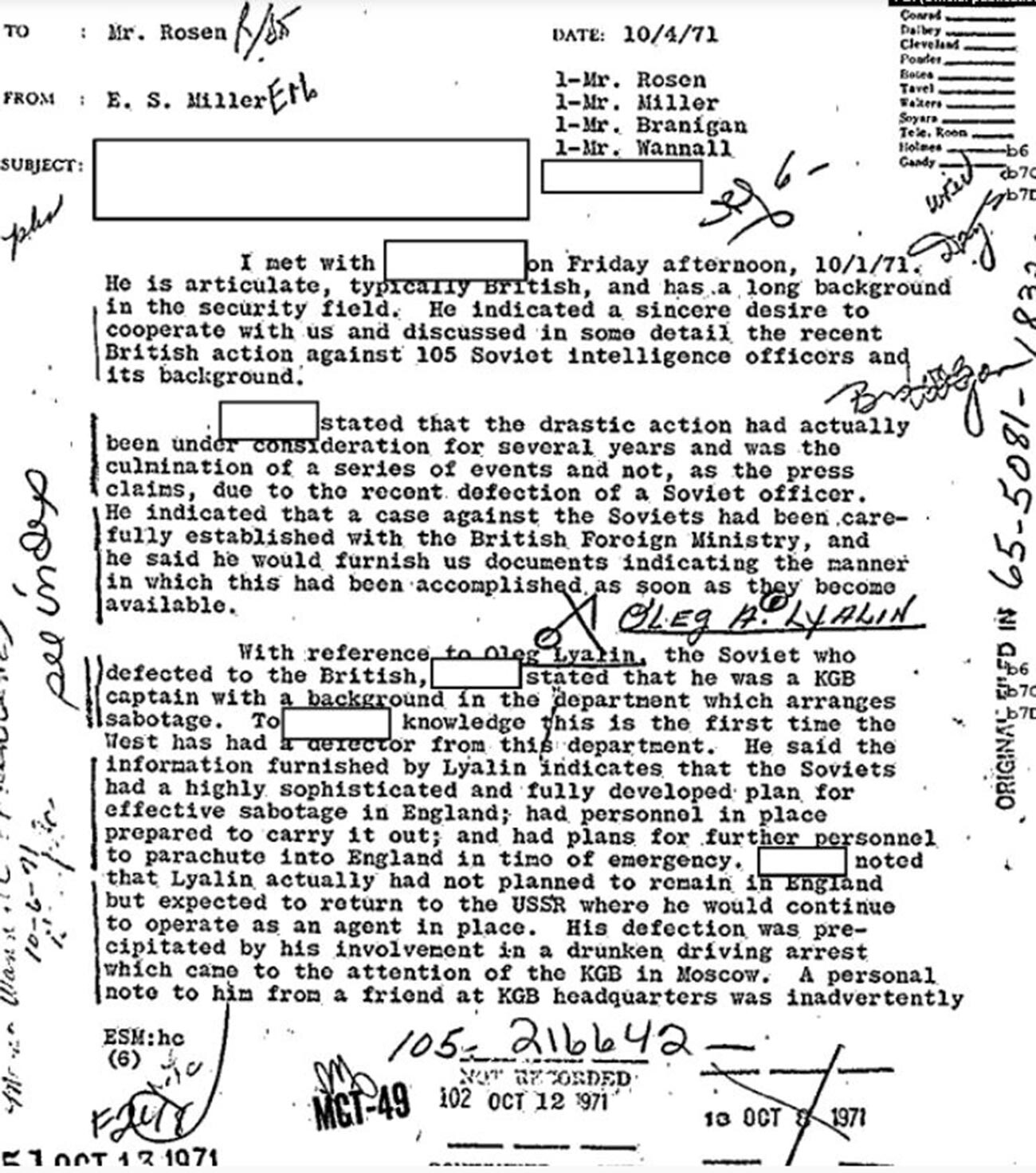
The Lyalin Case in the FBI files
FBIBy doing so, the 34-year-old man instantly gave himself away: the Soviets learned of his confession and moved to bail him out of the London police, but Lyalin suddenly disappeared. It turned out that Lyalin had been working for British intelligence for several years, passing secret data to them. He gave Britain the names of almost all the Soviet agents working in the country “under the cover” of the Soviet embassy or trade mission. “The British had long expressed dissatisfaction with the bloated personnels of the Soviet missions in London. There were many more Soviet diplomats in England than there were English diplomats in Moscow. The British suspected that there were few real diplomats among them,” wrote Leonid Mlechin. And so it turned out. In the aftermath of Lyalin’s treachery, more than 100 Soviet agents were expelled from England. The Soviets were only able to reciprocate by expelling 18 members of the British embassy. The Soviet network of agents in England was never fully restored and relations between the countries were seriously damaged.
Oleg Kalugin revealed in his memoirs that Yuri Andropov had personally given the order to find and eliminate Lyalin, still considered to be dangerous for the Soviet Union, but to no avail. British intelligence officers subsequently took him to the English countryside and helped him alter his appearance and name. He died in 1995, many years after his betrayal.
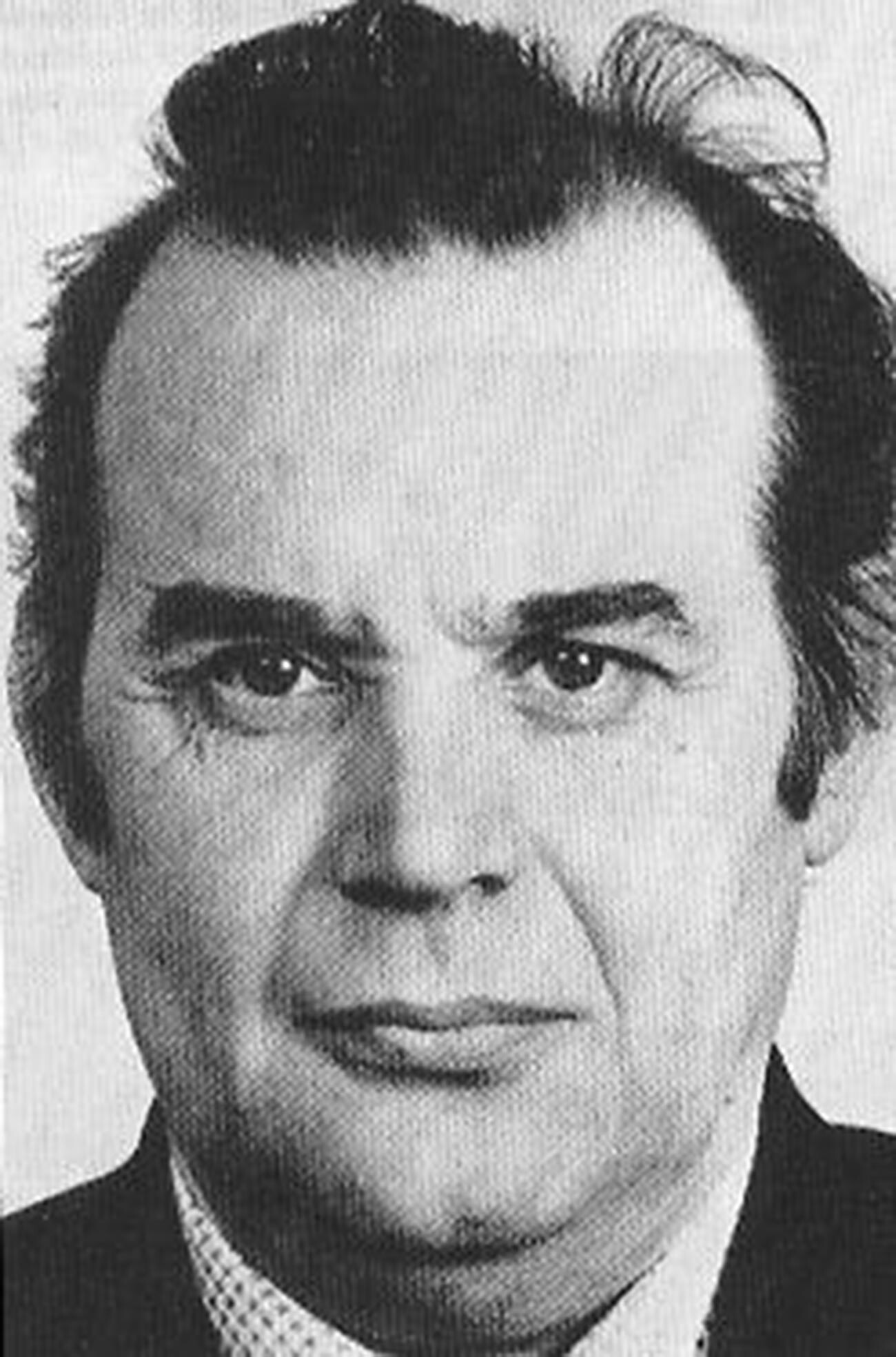
Vladimir Vetrov's official photo
Archive photoOn February 22, 1982, KGB Lt. Colonel Vladimir Vetrov murdered his mistress Olga, also a KGB officer. They went for a walk and had an argument – Olga accused Vladimir of never intending to divorce his wife in order to live with her. After beating Olga to death with a bottle and screwdriver, Vetrov also killed a passerby who ran up to them and fled the scene.
Vetrov was stripped of all his ranks and sentenced to 15 years in a maximum security prison. During the investigation, he sent a letter to his wife requesting her to keep the French intelligence service informed. Having intercepted the letter, the KGB learned that their employee was not only a murderer, but also a double agent.
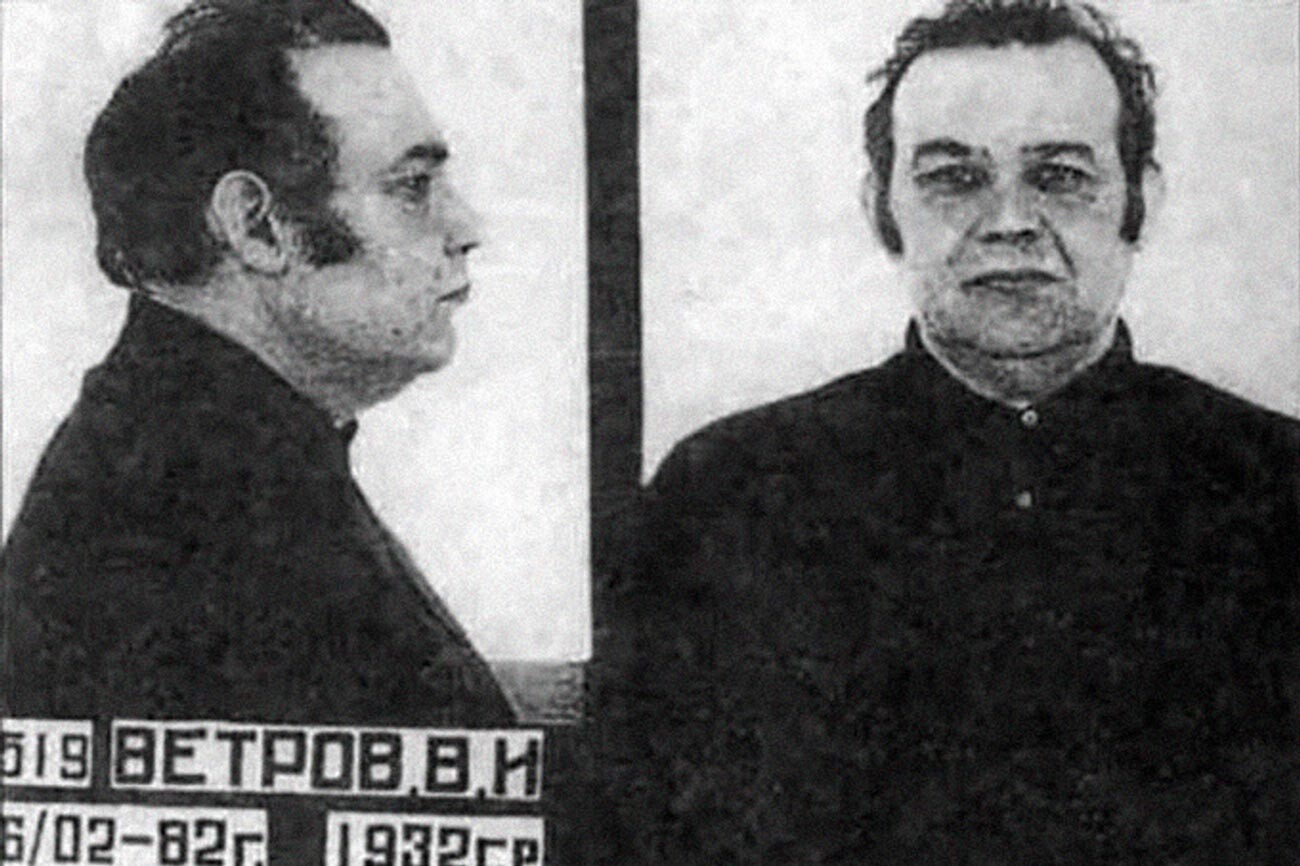
KGB mugshot of Vladimir Vetrov
Archive photoBack in the 1960s, while working in France, traditionally, under the guise of the ”trade representative” role, Vetrov made the “right” acquaintances and, after returning to Moscow, began to transmit to Europe secret cables about Soviet scientific and technical intelligence and industrial espionage. According to the reports of agent Farewell (as Vetrov was known in France), hundreds of Soviet agents around the world were uncovered and expelled.
In 1983, Vetrov, who was already serving a prison sentence for double murder, was returned to Moscow, charged with treason and shot.
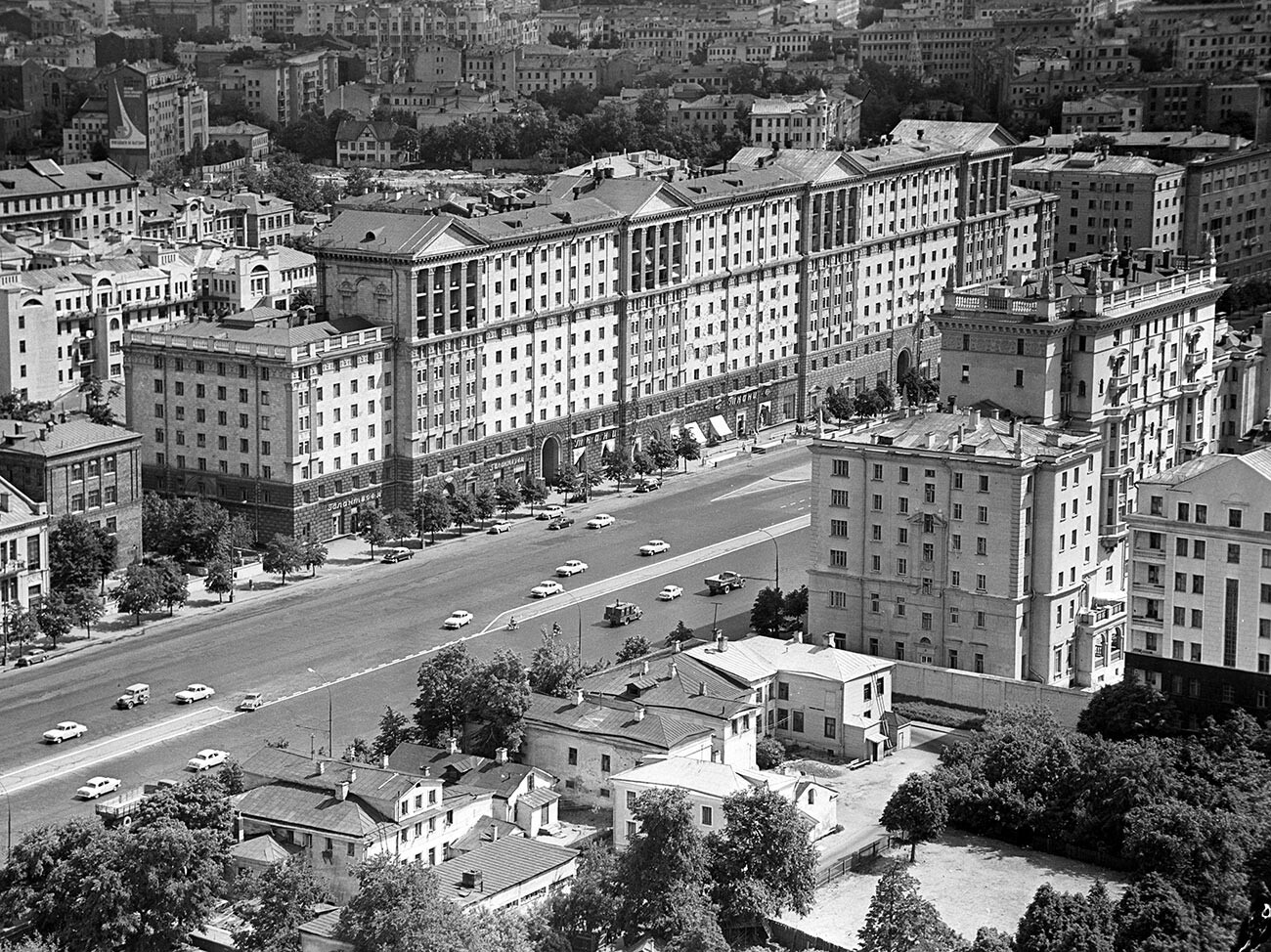
The house opposite the USA Embassy in Moscow, Novinsky blvd., 18/1
Anatoly Sergeev-Vasilyev/SputnikIn the course of the Cold War, the U.S. Embassy in the USSR was exposed to microwave radiation. The transmitting antenna was installed on one of the balconies of the 10-storey Stalin-era building at Novinsky Boulevard, 18, building 1 – the radiation was, thus, directed right at the facade of the American embassy just across the street.
The embassy learnt about the radiation in the 1950s, but long concealed that fact from its rank-and-file employees. As Jack Matlock, deputy head of the diplomatic mission, put it, the Americans first wanted to “understand the purpose of the radiation”.
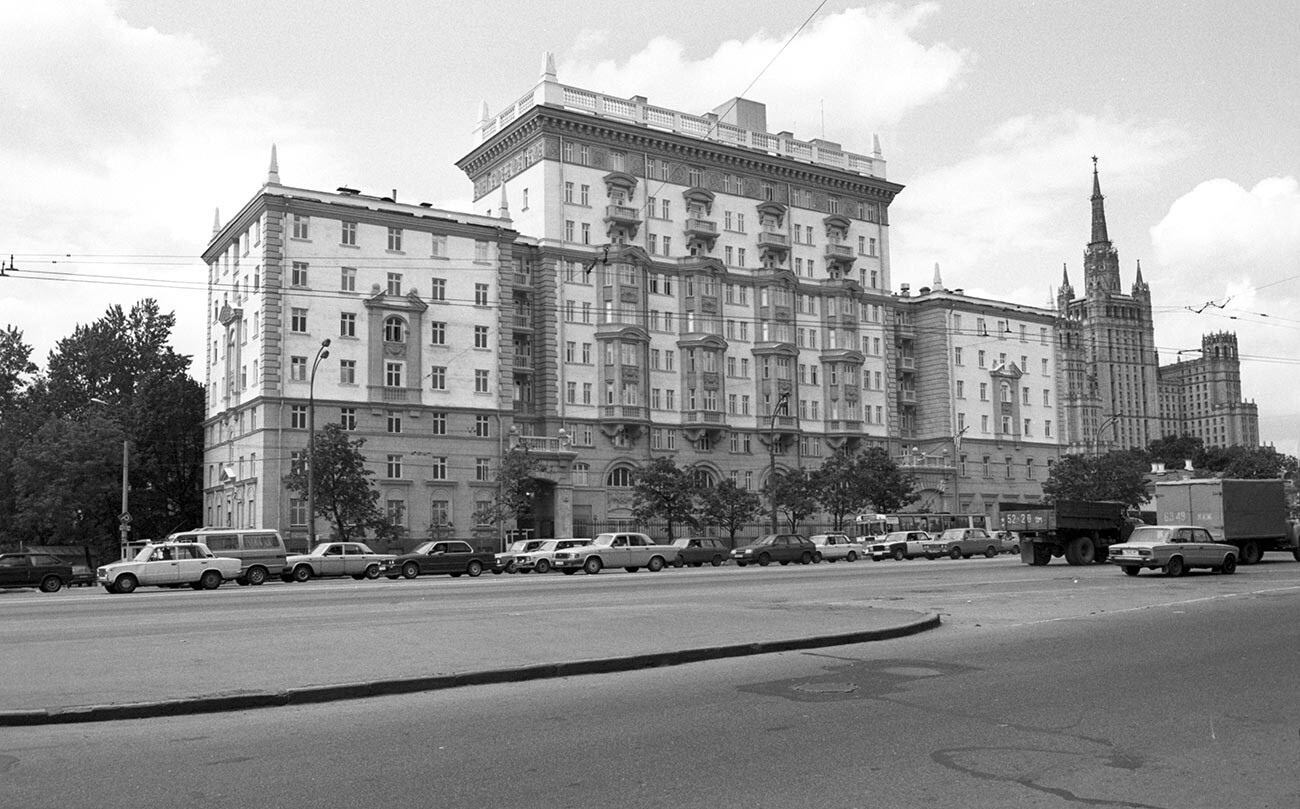
The USA Embassy in Moscow
Boris Prikhodko/SputnikWhen Walter Stessel became ambassador to the USSR in 1974, he ordered the disclosure of the radiation to the ordinary staffers, which caused them to panic at once. The ambassador himself soon developed serious health issues, including bleeding eyes. However, the U.S. stopped short of giving international publicity to the exposure, because, at that time, negotiations on disarmament were in full swing between the powers. Yet, Secretary of State Henry Kissinger told the Soviet ambassador to the United States that he was aware of the sabotage.
In 1982, Walter Stassil was appointed Undersecretary of State. But, at the time, he was already terminally ill with leukemia, caused, as his daughter assumed, by radiation, which the U.S. dubbed the ‘Moscow Signal’. Stassil died in 1986, having not revealed the details of the scandal. His daughter wrote: “He behaved like a soldier and chose not to make any fuss.”
However, there was no solid proof of the malicious intents of the radiation. There are many possible reasons why the Soviet Union could send a microwave transmission to the Embassy of the United States. Among these possibilities, the most likely theory is that microwave transmissions were used to launch eavesdropping technology for US intelligence operations. There is also a widely debated claim that the radiation signal was organized on purpose to harm the health of the US Embassy employees, but it didn't get any proof.
If using any of Russia Beyond's content, partly or in full, always provide an active hyperlink to the original material.
Subscribe
to our newsletter!
Get the week's best stories straight to your inbox